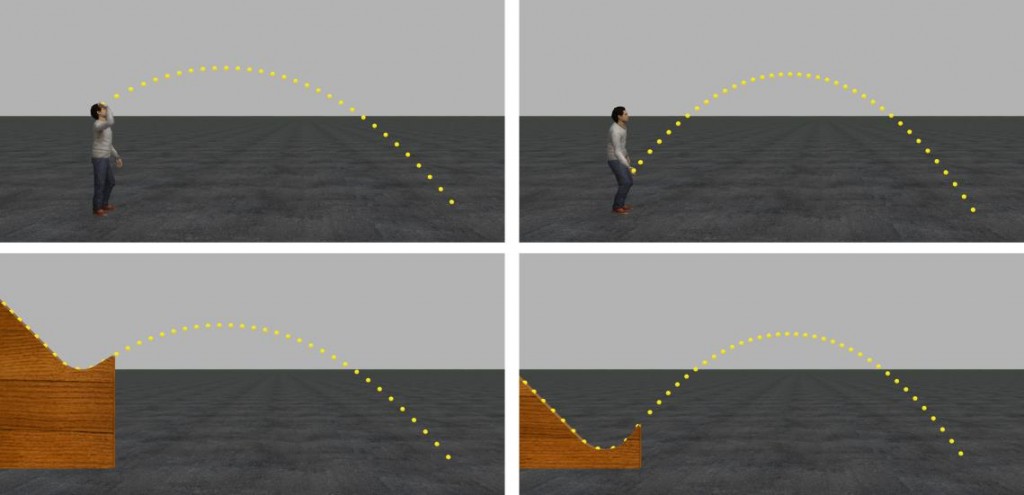Abstract

Animation budget constraints during the development of a game often call for the use of a limited set of generic motions. Editing operations are thus generally required to animate virtual characters with a sufficient level of variety. Evaluating the perceptual plausibility of edited animations can, therefore, contribute greatly towards producing visually plausible animations. In this paper, we study observers’ sensitivity to manipulations of overarm and underarm biological throwing animations. In the first experiment, we modified the release velocity of the ball while leaving the motion of the virtual thrower and the angle of release of the ball unchanged. In the second experiment, we evaluated the possibility of further modifying throwing animations by simultaneously editing the motion of the thrower and the release velocity of the ball, using Dynamic Time Warping. In both experiments, we found that participants perceived shortened underarm throws to be particularly unnatural. We also found that modifying the thrower’s motion in addition to modifying the release velocity of the ball does not significantly improve the perceptual plausibility of edited throwing animations. In the third experiment, we modified the angle of release of the ball while leaving the magnitude of release velocity and the motion of the thrower unchanged, and found that this editing operation is efficient for improving the perceptual plausibility of shortened underarm throws. Finally, in Experiment 4 we replaced the virtual human thrower with a mechanical throwing device (a ramp), and found the opposite pattern of sensitivity to modifications of the release velocity, indicating that biological and physical throws are subject to different perceptual rules. Our results provide valuable guidelines for developers of games and VR applications by specifying thresholds for the perceptual plausibility of throwing manipulations, while also providing several interesting insights for researchers in visual perception of biological motion.
Copyright Notice
The documents contained in these directories are included by the contributing authors as a means to ensure timely dissemination of scholarly and technical work on a non-commercial basis. Copyright and all rights therein are maintained by the authors or by other copyright holders, notwithstanding that they have offered their works here electronically. It is understood that all persons copying this information will adhere to the terms and constraints invoked by each author’s copyright. These works may not be reposted without the explicit permission of the copyright holder.